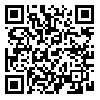BibTeX | RIS | EndNote | Medlars | ProCite | Reference Manager | RefWorks
Send citation to:
URL: http://ijoce.iust.ac.ir/article-1-296-en.html
The first step in the design of plate girder is to estimate the self-weight of it. Although empirical formulae for the same are available, the level of their accuracy (underestimate or overestimate) with respect to actual self-weight is not known. In this paper, optimized sections are obtained for different spans subjected to different live load carrying capacities and self-weights are estimated. EXCEL solver, which adopts Reduced Gradient Method (RGM) was applied for optimization. The objective function was chosen as Cross-sectional area with twelve constraints based on LRFD (IS 800: 2007) design specification for safety and serviceability. Simply supported (laterally restrained) plastic symmetric cross section without stiffeners is adopted for study. A mathematical model was developed based on best-fit curves between self-weight, span and live load carrying capacity and their trend line equations are obtained. The study revealed that, the ratio of self-weight to load carrying capacity was parabolic for a given span. The results from this equation are compared with the conventional formula and the standard deviation of the proposed model with respect to actual self-weight is in the range of -0.03 to 2.29 while that from the conventional model is in the range of -0.04 to 9.18.
Received: 2016/11/27 | Accepted: 2016/11/27 | Published: 2016/11/27
| Rights and permissions | |
 | This work is licensed under a Creative Commons Attribution-NonCommercial 4.0 International License. |





